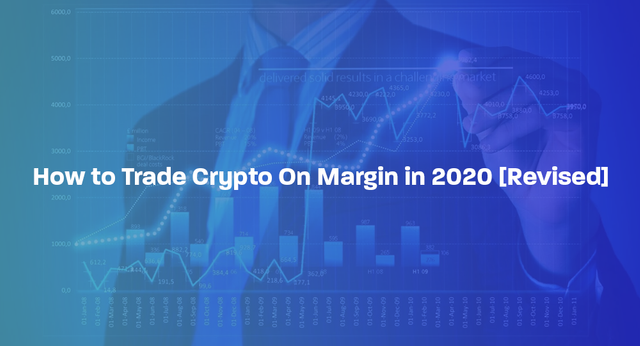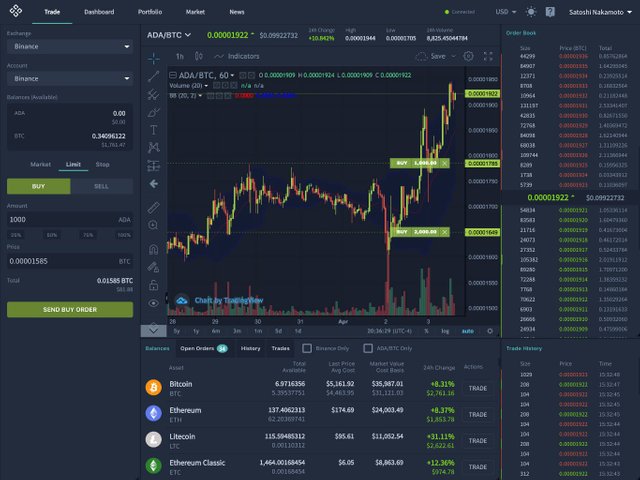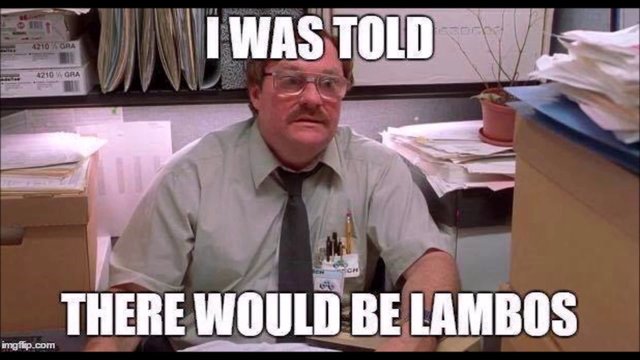How to Trade Crypto On Margin in 2020 [Revised]

Cryptocurrency trading is popular and it’s popular for a reason. Traders can design and execute a range of different strategies that can generate many times more earnings than could be typically possibly by working 9–5.
One area of cryptocurrency trading that all traders must resign themselves to is the risk that is involved.
Trading “on margin” or “margin trading” is a part of trading cryptocurrency that inherently holds even more risk than normal trading, but also that potentially allows for unbelievably high ROIs to be achieved as well.
We’re going to break down this part of cryptocurrency trading, looking at what cryptocurrency really is and what margin trading is, then moving onto the best places to margin trade cryptocurrency and a handful of strategies that use margin trading and that are being exploited by traders today to generate millions globally.
What is Cryptocurrency?
.jpeg)
Cryptocurrency is the newest addition to the world of global finance. Yet while crypto-assets are undoubtedly financial instruments, what differentiates them from traditional assets like stocks and bonds is their heavy dependence on technology, and their decentralized structure.
Following the financial crisis of 2007–2008 an anonymous individual or group called Satoshi Nakamoto released the Bitcoin whitepaper. This paper outlined a new kind of digital money which was largely a response to the clear problems that had recently come from the banking industry’s control on how money and value were created and controlled.
In the Bitcoin whitepaper, the new kind of asset was named “cryptocurrency”, with the underlying new technology that powered it being called “blockchain” and the first incarnation of this new currency being called “Bitcoin”.
Unlike fiat currencies like USD and EUR, cryptocurrencies like Bitcoin do not have a centralized body or central bank that controls things like supply, production and interest rates.
Instead, cryptocurrencies use a new technology called blockchain in order to manage how new coins are created, which transactions are considered legitimate, and who gets newly minted cryptocurrency.
It does these using systems of allowing all participants to come to a decision on these things that all parties accept, with all parties potentially not knowing each other, having conflicting interests and being highly globally-dispersed — these systems are known as consensus mechanisms.
Bitcoin uses the original consensus mechanism known as proof of work, which is essentially a competition between a large number of computers and servers to solve a cryptographic puzzle which is set to be solved on average once every 10 minutes.
Once one of the participants, or “miners”, solve the puzzle they are rewarded with some free Bitcoin. Currently, that rate is at 12.5BTC per reward, with it originally being 50BTC, and later in 2020 it being halved to 6.25BTC.
What Does “On Margin” Mean?

Trading “on margin” means to be creating trades using margin trading, as opposed to normal non-margin trading.
Margin trading is really just the process of creating trades that would typically not be possible by borrowing funds from a broker.
Margin trading can be used in two main ways. One way is to borrow funds, sell them and rebuy them at a lower price with this process being known as “shorting”. The other way to margin trade is to borrow funds to create trades which are much larger than they normally would be, therefore experiencing larger changes in profitability for normal sized price movements in a process known as “leveraging”.
What exactly is Shorting?
Shorting is the process of arranging a loan of an asset from a broker, selling it immediately, and then rebuying the same amount as was loaned once the price has dropped.
When the amount borrowed has been repurchased for less, that amount is repaid to the broker, and the difference between the original value of the assets and the repurchase price is kept as profit.
Shorting creates trades that would not normally be possible by them being more profitable as the price of an asset drops instead of increases as would be normal.
Shorting is a critical part of any robust trading strategy, because by being able to short a trader can then profit when the price is decreasing instead of only being able to generate when the price increases.
This means that profitable trades can be created in bear markets as well as bull markets, increasing overall profitability and allowing for the creation of a more flexible trading system.
What exactly is Leveraging?
Leveraging is the process of arranging a loan of funds while securing the loan with an amount of previously owned funds called the “margin”, and then using the loaned funds to create trades that are much larger than would normally be possible with the funds available.
Trades can be created with leverages that are multiples of the normal size of the trade. For example, if I create a long position on Bitcoin with leverage of 10x, which means that for every 1% profit that would normally be made, I will now make 10x as much, or 10%.
Even though leveraged trades are able to attain much higher profitability than normal trades, they still only require the same initial outlay in order to be created and this makes leveraging a very efficient way of using capital.
The highest leverage available for crypto-assets is 100x, which allows for large positions to be created with relatively small amounts of crypto, to begin with.
Crypto Margin Trading: Risk vs Reward

As with all investments, crypto margin trading is really a calculation of risk vs reward.
Reward
Margin trading has the potential to allow traders to generate significantly more revenue than they would be able to without it, and this provides a very important incentive for traders.
The overall aim of trading cryptocurrency is to generate as much profit as is possible within a given period of time. Generating $5,000 profit in one week is better than generating $4,000.
Profit can normally be generated by buying low and selling higher during upwards trends. By using shorting profit can then also be generated during downwards trends.
By using leveraging during either upwards or downwards trends, higher profit can be generated from the same investment during the same period of time.
Risk
As well as increasing the amount of profit that can be generated, leveraging also increases the potential for losses if it is not correctly protected using risk mitigation.
Mitigating risk should be a core part of any strategy involving leveraging as this will allow for maximum profitability while reducing the chance for losses to be made.
Risk mitigation may include hedging, and particularly the use of stop losses in order to ensure that there is a set maximum that can be lost if the price swings in the other direction.
Although many focus on the risk involved with margin trading, risk should be seen as a side effect of trading at higher volumes — one that should be reduced as much as possible.
Best Cryptocurrency Margin Trading Platforms
PrimeXBT
.png)
PrimeXBT is the biggest multi-asset margin trading platform on Earth and has quickly grown to becoming a leader in cryptocurrency margin trading.
To date, the platform sees up to $550 million per day in trade volume and has excellent liquidity.
As the former largest crypto margin trading platform, Bitmex, has suffered from huge losses in trade volume and its users as a result of being struck by numerous scandals in the last 12 months, PrimeXBT has enjoyed a huge increase in users.
The platform provides trading in both crypto-assets like BTC, ETH, EOS, LTC and XRP, as well as traditional assets such as stock indices, forex pairs, and commodities.
PrimeXBT’s fees are at a low 0.05% per trade across all trades, and in comparison, the average across the crypto industry is close to double that of 0.1%.
Kraken
.png)
Kraken is an old-school crypto trading platform that has adapted with the times to become well respected, especially with regards to security.
The founders of Kraken created the platform after being called in to assess the damage from the Mt Gox. collapsed in 2014.
Since the Kraken has suffered from issues like a slow and glitchy trading engine, but as time has progressed it seems as though the platform has been upgraded — both technically and aesthetically.
Today Kraken has a much more modern design that it did originally, as well as most if not all of the issue with its trading engine seeming to have been solved.
Bitfinex
.png)
Bitfinex is another of the older platforms with it surviving year with only a single hack, and continuing to grow its offerings to the cryptocurrency marketplace.
The platform launched with a relatively limited number of assets to trade, and over time has built a roster with dozens of the leading cryptocurrencies.
Bitfinex has not been without controversy however, with the management of Bitfinex also managing the world’s 2nd most traded cryptocurrency, stable coin, Tether.
There have long been rumours that the funds that are designated for being held for Tether are not actually there and calls for auditing into the operations of Tether have been widespread.
Saying this, from the point of view of performance of Bitfinex itself, the platform has done well to survive and thrive over such a long period of time.
Best Cryptocurrency Margin Trading strategies
.jpeg)
Shorting the Pump
Often cryptocurrencies will have huge increases in price over relatively short periods of time, known as “pumps”.
While there is certainly the opportunity to generate profit by trying to predict when a pump will occur, there is also another opportunity to profit from the drop following the pump.
Often pumps are fuelled by more and more traders seeing an increase and then buying into it, acting to further fuel the pump. In this situation, the price movement does not reflect an actual change in the value of the crypto-asset but is instead purely speculative.
Because of this, the demand for the asset comes to a point where no further buyers are coming in, and at this point, the pump often reverts back to the previous price after a significant dump.
With the higher likelihood of a significant drop in price, this presents an opportunity to create a short position that may have a higher chance of paying off.
This strategy can even be combined with leveraging to yield higher returns from shorting a pump, and this is also a good example of seeking strategies that maximize the potential for profit while minimizing the risk associated with each trade.
Leveraged Momentum Margin Trading
Momentum trading is a very popular strategy that can be either used as the basis of the logic behind making trades, or as the entire strategy itself.
The theory behind momentum trading is that one the price of cryptocurrency trends in a certain direction, there is more chance that it will keep moving in that direction as more traders take responsive actions that reinforce the trend further.
For example, if the price of Bitcoin begins to drop this means that people holding Bitcoin will have lost money. Some traders will be able to absorb this loss in the hope that the price will come back up, others will not be prepared to risk losing more money and will sell their Bitcoin.
When they sell, the price of Bitcoin will drop even further. This will repeat the cycle with new traders that are now wanting to also sell.
From a strategic point of view, seeing a new trend forming and then taking action at the beginning of this cycle allows for the potential to increase the probability of executing successful trades.
Once there are trades that are identified which have a higher probability of being successful, leveraging the trades will then deliver the most efficient use of capital, and will proper risk mitigation in place, this could lead to the creation of a reliable revenue stream.
Leveraged Trading Bounded Trends
Range bound trends are trends which oscillate between two ranges in a pattern that can become predictable.
For example, the price of Bitcoin could move horizontally between $7,000 and $7,500, and once it reaches either of these points it turns and the trend reverses in the other direction.
As with the strategy previously, this can create a situation where there is an increased likelihood of being able to create trades which are successful.
Once such a pattern can be regularly identified and trades can be created which reliably generates profit, leveraging these trades is again the most efficient way to use capital, as for the same amount of investment a much higher profit can be potentially created.
Range bound trends can be flat, can be moving upwards or downward linearly, or can even be patterns that are exponential or logarithmic in nature.
In Summary
While cryptocurrency trading is known for being profitable, cryptocurrency margin trading can potentially expand profits to being up to 100x larger than normal.
Many trading platforms around the world are now starting to try to incorporate these services into their systems, but margin trading mainstays like PrimeXBT are leading the way by building their services around margin trading and delivering the highest industry-wide leveraging available.
When choosing where to margin trade it is important to consider things like the leveraging ratio available, which assets are on the platform, the security systems that are being implemented, and the fee schedule of each platform.
And while there are many traders globally that generate reliable profits without margin trading, almost all professional trading houses, hedge funds, and other institutional traders use margin trading because it is the most efficient use of capital available and it actually assists in developing robust strategies that include risk mitigation.